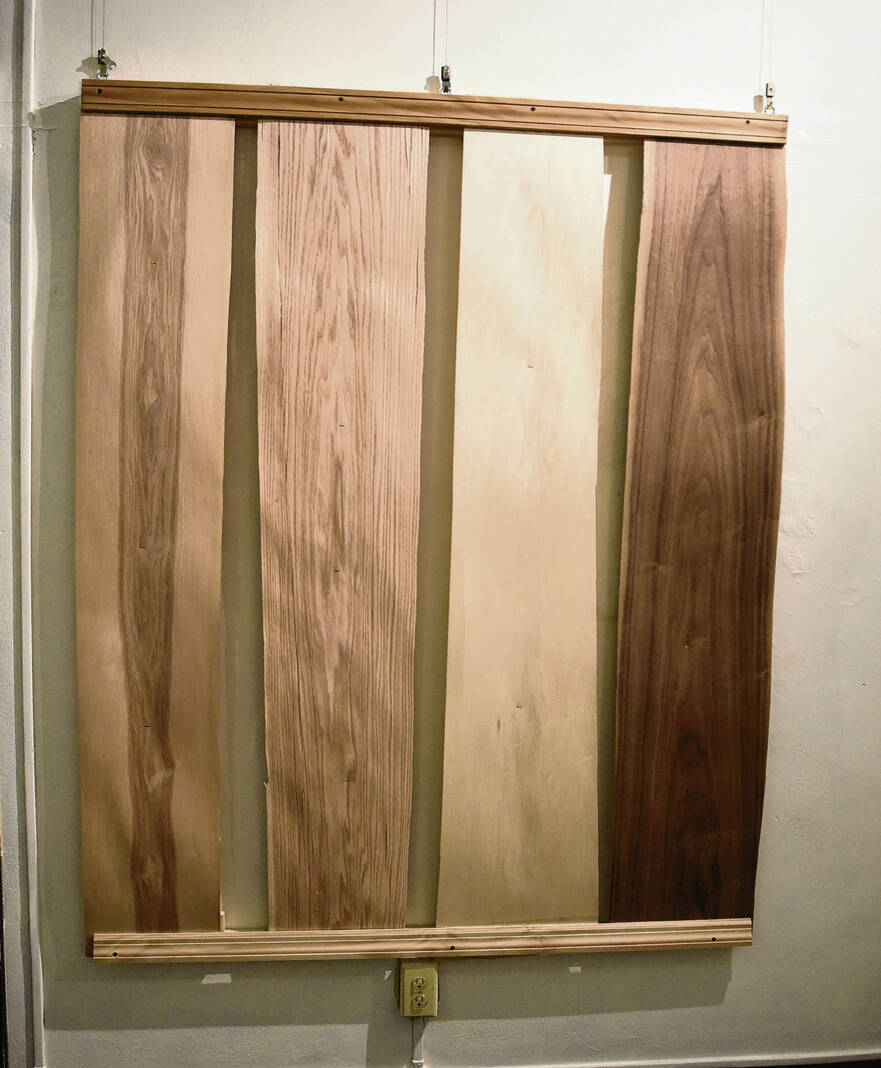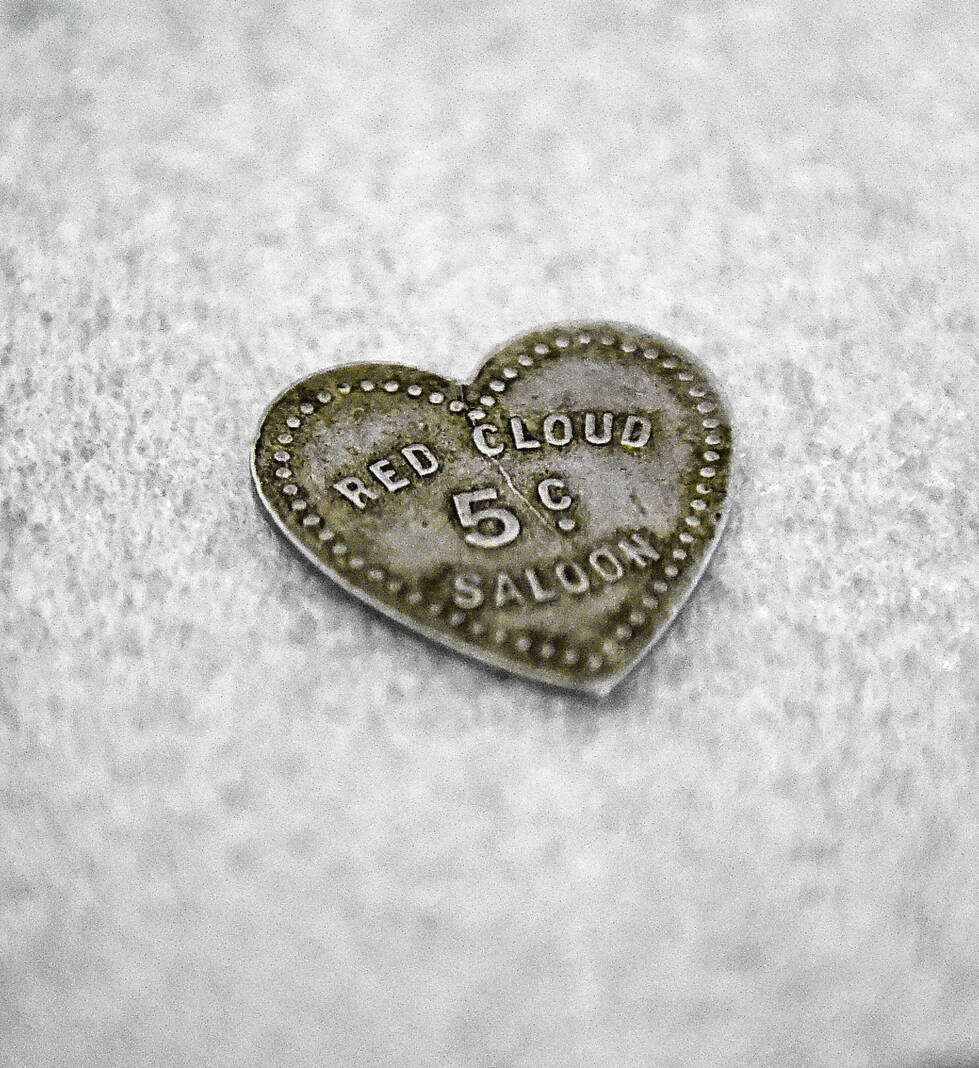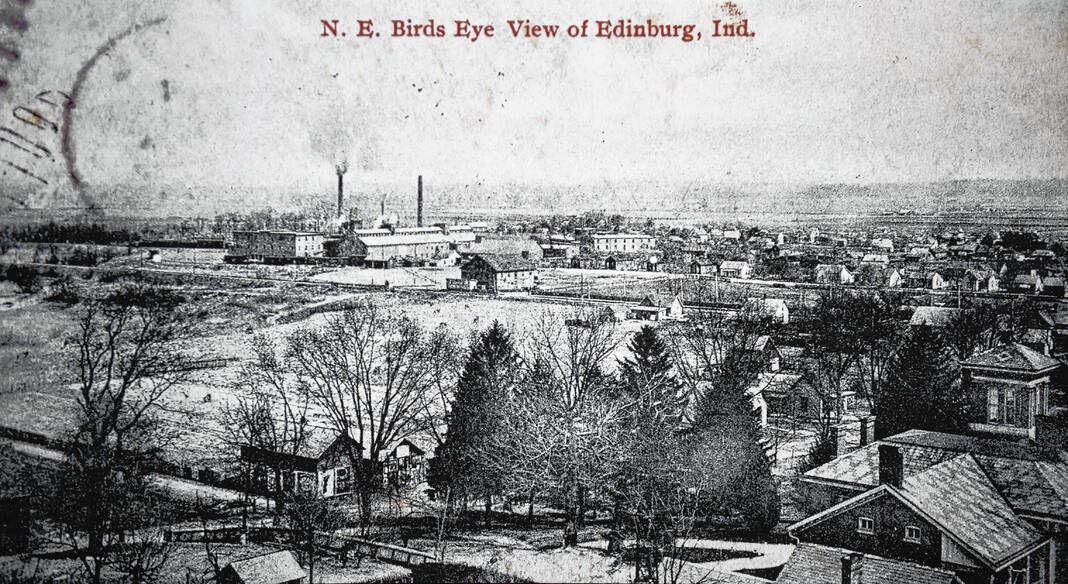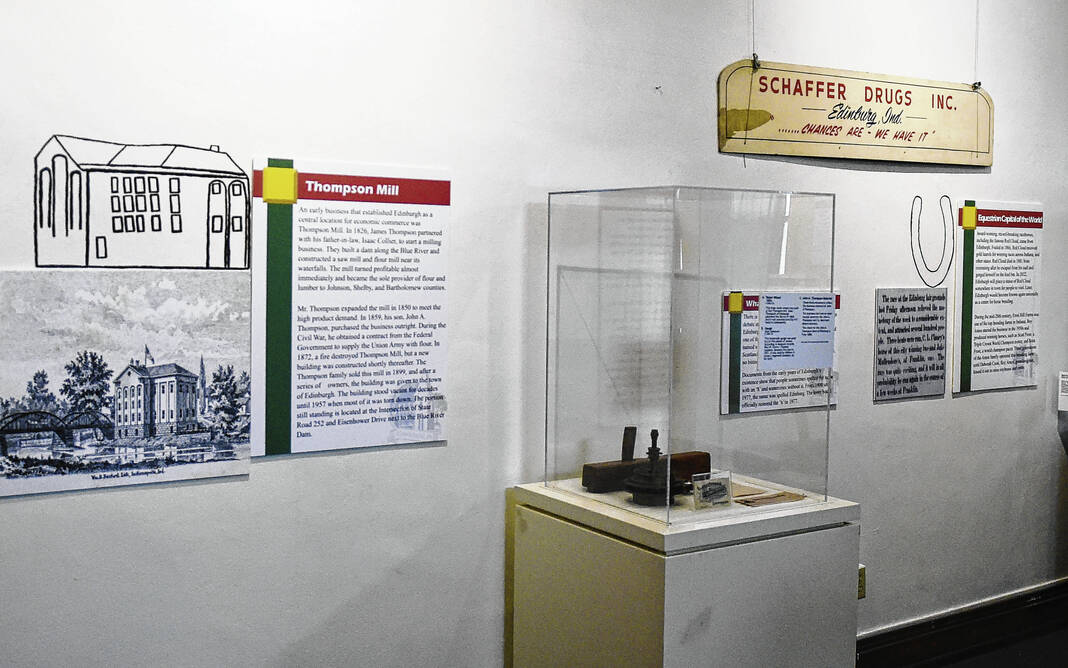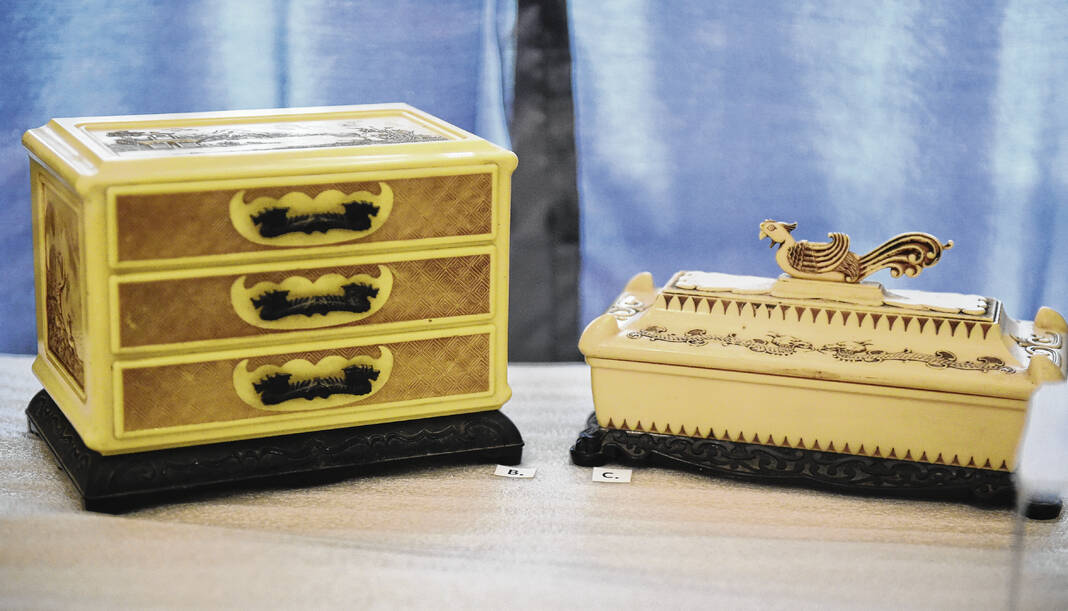The mystery has inspired debate and speculation for years.
At different times during its history, the settlement on Johnson County’s southern edge has been known both as Edinburg and Edinburgh. The “h” was removed in 1900, and added back on in 1977. No one is certain why.
“They had the h, you dropped the h, you add the h back on. Those are the fun local stories that we can highlight,” said David Pfeiffer, director of the Johnson County Museum of History.
Added museum curator Emily Spuhler, “There are still people who refuse to put that ‘h’ back on.”
The twin spellings is an intriguing part of Edinburgh history, one of the many aspects of the town’s heritage covered in a new exhibition created in celebration of its bicentennial. “Edinburgh: Johnson County’s First Town” is a showcase telling the story of the county’s oldest community, created by the Johnson County Museum of History.
In photographs and artifacts, detailed information placards and stories of little-known facts, the exhibition covers everything from John Campbell’s arrival as the town’s first settler to its world-famous veneer industry.
Museum officials intend not only to recognize the town’s long history, but to help shine a spotlight on a community that many in Johnson County don’t know much about.
“It’s really about bringing the community together. People in the county know where Edinburgh is, they’ve been down to it, but do they really know that history, that it was the first town in Johnson County,” Spuhler said. “That knowledge can bring people together.”
The Edinburgh area was first settled in the early 1820s by John Campbell, with the original plat containing 32 lots in 1822. Throughout its history, it became a thriving town, boosted by railroads and mills and the establishment of the veneer industry, for which Edinburgh is still famous.
Log cabins became ornate mansions and Victorian buildings. Arts and culture flourished.
Much has been planned by the Edinburgh community to draw attention to its history in light of its bicentennial. The celebration has been marked on the museum’s calendar for years, the first of many important milestone celebrations for the county and communities within it.
In preparation for the exhibition, officials met with SaraBeth Drybread, a longtime Edinburgh resident who is chairing the town’s yearlong festivities. They wanted to know what topics Drybread thought were the most important to spotlight.
“We wanted to know what would be nostalgic for local residents, but also be informative for people who aren’t as familiar with Edinburgh,” Spuhler said.
Some were easy answers. Campbell’s arrival and founding of the town was a logical place to start. The creation of Thompson Mill, the area’s first major industry, was another important aspect to focus on the establishment of Edinburgh’s robust economy in the 1800s.
Camp Atterbury and present-day Edinburgh also warranted major focus.
But woven into those foundational ideas are amusing anecdotes and unique details about the town that had to be included, Spuhler said.
Displays tell about the Curly Dog, a famed local food joint, and the Pixy Theatre, the center of entertainment in the town. Edinburgh had been a titan in the horse breeding and horse racing world in the past, so photographs and items teaching about champions such as Red Cloud, the world-record setting racing horse, focus on that.
No story about Edinburgh would be complete without looking at its veneer industry, still thriving in the small town. A fun interactive has been included in the exhibition teaching people about veneer — thin pieces of high-quality wood attached to doors, furniture, flooring and other wooden products — and the wood used to make them.
“I’ll be perfectly honest — when I was researching, I didn’t technically know what veneer was. So it was nice to learn what this was and see the different types of lumber used to make it in Edinburgh,” Spuhler said.
Stepping into the exhibit gallery, visitors pass by an oversized portrait of John Campbell, who first settled and founded Edinburgh. They walk by blown up historic images of the town and the Blue River Starch Works Factory.
A brass water wheel used at the Thompson Mill is in a glass display case. In another corner, the hoof of Red Cloud is set against a blown up copy of his obituary from 1881.
One whole wall is covered in Edinburgh-made veneers made from different local wood.
The exhibit opens today at 6 pm. with a public reception at the museum, 135 N. Main St., Franklin. Visitors will have a chance to not only tour the displays for the first time, but to hear more about Edinburgh history from Drybread.
Taken together, organizers are optimistic that Edinburgh will shine during its time in the spotlight.
“A lot of people focus on the outlet mall. You go down there and shop at the mall, and that’s Edinburgh. So it’s been fun to look at 200 years of history, the downtown, and everything they have down there,” Pfeiffer said.





